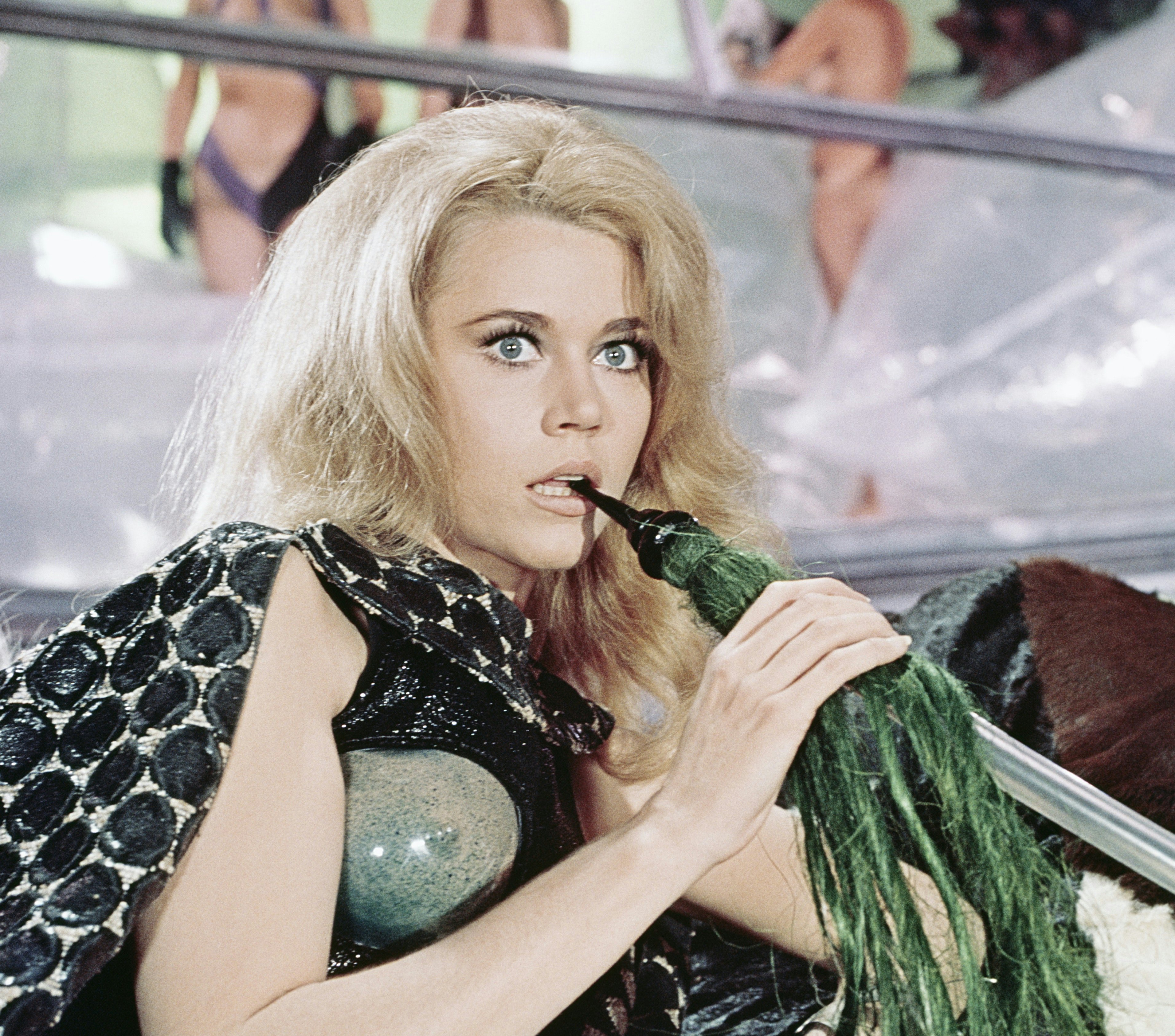
Fifty-five years ago, on October 10, 1968, one movie created the quintessential tongue-in-cheek sci-fi romp. But the legacy of this hyperbolic and often ridiculous film is perhaps more serious than you might think. Could a kitschy sci-fi movie from the swinging ‘60s actually have been not-so-secretly brilliant? There’s a case to be made that Barbarella is better than its hyperbolic reputation and that it actually managed to be more progressive than its TV sci-fi cousins like Star Trek.
In the far future, astronavigation expert Barbarella (Jane Fonda) has happily never heard of war, and cannot even imagine why someone would want to build a weapon. Nonetheless, like a hippie outer space James Bond, Barbarella gets an unexpected video call from the President of Earth who asks her to track down a missing scientist who may or may not have helped create such a weapon. Yes, the basic plot device that sets everything in motion in Barbarella is, basically the same plot as Rogue One — find a missing scientist, save the galaxy. And, if you think Barbarella is just an Austin Powers-style 1960s joke with more in common with Spaceballs than Star Wars, you may want to give it another look.
Although the movie is very clearly intended to be read as camp, with an overall production design that is intentionally pulpy and over-the-top, it’s impossible to call the film cheap or accidental. Produced by Dino de Laurentiis — who would later fund Flash Gordon (1980) and Dune (1984) — Barbarella is very much an on-purpose farce in which even the selection of the color palettes helps justify the absurdity of the storytelling.
In this way, with its minimalist, yet colorful aesthetic, you could squint and imagine director Roger Vadim filming Barbarella as a kind of arty feature film version of the 1960s Star Trek. Future in which humankind is at peace? Check. Alien vistas that are more impressionistic than realistic? Check. Scantily clad women who we’re told are liberated despite the fact that the male gaze seems to very much running the show? Triple check. As a piece of cinema that unpacks the history of sex in pop art, Barbarella is an undeniable milestone, and, in many ways, a problematic one. But, while ‘60s Star Trek tends to get a pass from fans and scholars on the sexism front, it is interesting to see that upon rewatch, Barbarella has some of the same trappings as old Trek, but manages to come across as much more progressive, even if by accident.

First published in 1962, Barbarella was an adult fantasy comic created by artist Jean-Claude Forest for V-Magazine; not to be confused with the contemporary fashion magazine of the same name. Like her film counterpart, the Barbarella of the comics isn’t designed to be an intellectual character, but, more like a female Buck Rogers. In the 1971 SF nonfiction book Science Fiction: What It’s All About, Sam Lundwall makes the argument that at the time, Barbarella represented a new kind of science fiction and fantasy heroine, writing, “In the nice carefree days of yore, the heroine was abducted by monsters. Today she hunts them up.”
While a bit reductive, this is essentially correct. In the early ‘60s Forest’s comics presented a shift in how SF heroines were perceived, and the movie doubled down on that notion. And it's in this specific shift where Barbarella beats the ‘60s Star Trek. Yes, the ‘60s Trek broke new ground with racial diversity on TV, and in science fiction, but the classic show is still very much a male-centric series. The mini-skirt-wearing female characters often have moments of brilliance, but it was rare to see them take over the narrative and become the main characters.
And it's here where Barbarella wins by default. Yes, the movie is clearly objectifying its eponymous heroine, but there’s a knowing goofiness written into Jane Fonda’s (initially) naive lead character. When the film was rereleased in the ‘70s, it was retitled Barbarella: Queen of the Universe, because that’s exactly what’s great about this movie: the female action hero makes everything happen. Today, the movie remains witty, meticulously designed, and most importantly, unique.
Currently, Sydney Sweeney is reported in the process of making a new remake of Barbarella. Surely, such a contemporary remake will address the sexist baggage of the original film. But because Barbarella was so original when it came out and not a spoof of anything but itself, that eccentric and hilarious feeling will hopefully carry over to a new generation of moviegoers. In 1968, Barbarella had to save the universe all by herself. Thankfully, she’s not alone now.







